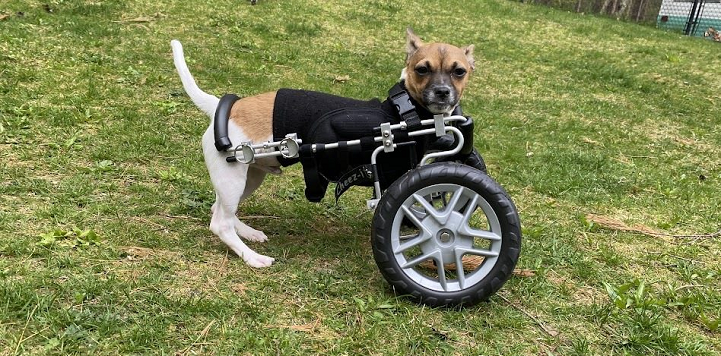
Don’t worry, be happy: Opting for the upbeat in your messaging
It can be hard to capture public attention when you need support during a tough time or are attempting to find that “unicorn” adopter for a challenging cat or dog. Is it better to downplay the negatives or will you make a greater impact by focusing on the tragic elements of a story?
As an organization that believes strongly in the power of the positive, it’s clear what side we come down on the majority of the time. Our social media, marketing, and fundraising materials all reflect this belief, and we have made a point to talk about it in more than one of our national conferences. In fact, Renegade Paws Rescue (RPR) in Georgia credits the 2022 conference with inspiring them to switch to upbeat social media posts.
“We learned dozens of new methods when it comes to digital media and feel like it is reflected in our content, especially in our blog,” says Jennifer Taylor, RPR’s director and puppy wrangler. RPR started its Happy Dog Microblog as a way to spotlight dogs that have trouble finding homes, especially large breeds.
“It gives them a little extra attention,” says Jennifer. “Our social media team works hard to craft narratives that boost the audience’s mood in order to better communicate our community-focused mission.”
Pitching imperfect pets
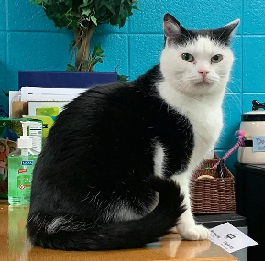 Need ideas about fun ways to talk about your more “challenging” pets? If you’ve been paying attention to social, web-based, and print media lately you’ve probably seen some good examples from groups that have spun the negative in a positive way. A great one is Mitchell County Animal Rescue (MCAR) in North Carolina, which pitched Perdita, “the world’s worst cat” in 2020. Perdita was described as “ready to be socially awkward with a socially awkward human who understands personal space.” Included in her bio were some of her likes – “staring into your soul until you feel as if you may never be cheerful again” – and dislikes – “HUGS.” Not only did Perdita find a home, but she “made a Grinch-worthy turn around, having her heart grow three times in size.”😉
Need ideas about fun ways to talk about your more “challenging” pets? If you’ve been paying attention to social, web-based, and print media lately you’ve probably seen some good examples from groups that have spun the negative in a positive way. A great one is Mitchell County Animal Rescue (MCAR) in North Carolina, which pitched Perdita, “the world’s worst cat” in 2020. Perdita was described as “ready to be socially awkward with a socially awkward human who understands personal space.” Included in her bio were some of her likes – “staring into your soul until you feel as if you may never be cheerful again” – and dislikes – “HUGS.” Not only did Perdita find a home, but she “made a Grinch-worthy turn around, having her heart grow three times in size.”😉
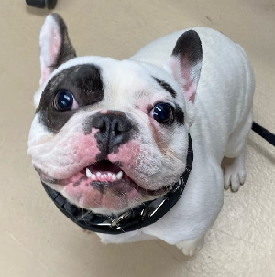 There’s also the recent case of Ralphie, a 26-pound pooch described by New York’s Niagara County SPCA as “a fire-breathing demon" and a “a whole jerk- not even half." His adoption post was picked up by People.com, which also talked about his adoption a few weeks later, noting that his “comical and brutally honest Facebook post won Ralphie numerous admirers and many adoption applications.”
There’s also the recent case of Ralphie, a 26-pound pooch described by New York’s Niagara County SPCA as “a fire-breathing demon" and a “a whole jerk- not even half." His adoption post was picked up by People.com, which also talked about his adoption a few weeks later, noting that his “comical and brutally honest Facebook post won Ralphie numerous admirers and many adoption applications.”
Jennifer Dreisewerd, director of feline operations at Kansas City Pet Project (KCPP) in Missouri, purposefully set an upbeat tone for the cats living at the organization’s partner group Whiskers Cat Café when she was responsible for their social media.
“I tried to express the individual personalities of the adoptable cats as best I could to help them find homes,” Jennifer D. says. “For those with issues, I always tried to spin the posts to ones of triumph of will versus sad messaging.”
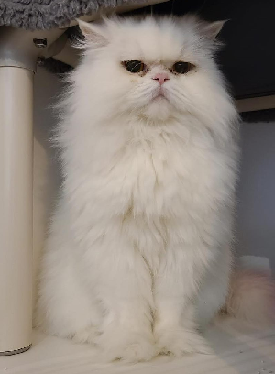 Percy is another great example. She had a personality much like Perdita’s: “Under no circumstances does she wish to meet or live with another animal. It’s absurd that you would even ask … She has demands and she is not afraid to say them loudly out loud.” Lastly, Percy’s “bail” was listed at “1 million dollars OBO.” On balance, though, Jennifer D. made a point of giving an update on the “new, improved” Percy after she had a chance to settle in:
Percy is another great example. She had a personality much like Perdita’s: “Under no circumstances does she wish to meet or live with another animal. It’s absurd that you would even ask … She has demands and she is not afraid to say them loudly out loud.” Lastly, Percy’s “bail” was listed at “1 million dollars OBO.” On balance, though, Jennifer D. made a point of giving an update on the “new, improved” Percy after she had a chance to settle in:
“Upbeat messaging makes people more likely to follow your page. Constant negative or sad media feeds can make people feel hopeless if done too often,” Jennifer D. says. “The sad posts should be made when you want to pull in people's emotions for a very specific reason.”
Back to RPR, the organization recently put a unique spin on a negative that really wasn’t one when it promoted a litter of “disgusting puppies.”
“We made a Facebook post saying, ‘We have some truly disgusting content to share with you this evening,’ Jennifer T says. “It continued: ‘Be warned, the images you're about to see are extremely graphic... These horrific specimens are known as The Hocus Pocus litter and they are … (T)erribly ugly animals. Quite repulsive, really.’

What followed were undeniably cute photos of puppies that led to dozens of applications. The organization not only placed all of The Hocus Pocus pups, but their adoption counselors worked with many of the applications that weren’t selected to make a perfect match whenever possible.
Positive posts net expanded reach
Sure, adoptions are a major goal of using such tactics on social media, but these types of messages can reach a wider audience via multiple media outlets, too. Take the case of Joey, a puppy at Vintage Pet Rescue in Rhode Island who was born without front legs.
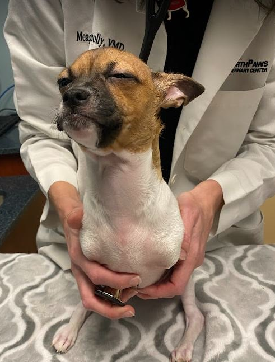 “Joey’s story is one we could have really made very depressing by taking a ‘look how sad this puppy is’ angle,” says founder Kristen Peralta. “Instead, we focused on how incredible and happy he is, and that makes people happy.”
“Joey’s story is one we could have really made very depressing by taking a ‘look how sad this puppy is’ angle,” says founder Kristen Peralta. “Instead, we focused on how incredible and happy he is, and that makes people happy.”
Joey ended up being featured on The Dodo, People.com, and 15/10 Foundation, plus he participated in the 2023 Puppy Bowl. Perdita (and her “happy ending” adoption story) landed on multiple media outlets, too, spreading as far as Australia and the United Kingdom. The Hocus Pocus pups posting resulted in the most popular Facebook response RPR has ever had.
Don’t overlook sharing examples of your organization’s empathy, either. McKamey Animal Center (MAC) in Tennessee was a recent widespread story because of the way it chose to respond in the case of a dog named Lilo.
“Lilo was a stray who had a note attached to her collar from her person, who didn’t want to give her up but felt she had no other options because she had two children and was experiencing homelessness,” says Lauren D. Mann, CNP, MNM, MAC’s director of advancement. “It was clear we had to do something to try and help reunite her with her family.”
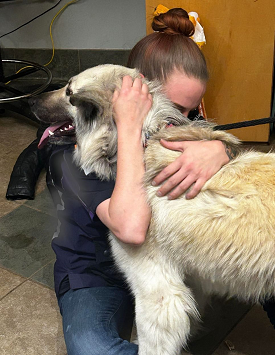 MAC used its social platforms to put out a message it hoped would make its way to Lilo’s family, and it quickly went viral on an international scale. The message resulted in so many donations that the organization launched The MAC Cares Fund, where donors can support families and pets in need who are experiencing similar circumstances. Most importantly, the message reached Lilo’s person and MAC is currently working on providing her with enough resources to help facilitate Lilo’s permanent return.
MAC used its social platforms to put out a message it hoped would make its way to Lilo’s family, and it quickly went viral on an international scale. The message resulted in so many donations that the organization launched The MAC Cares Fund, where donors can support families and pets in need who are experiencing similar circumstances. Most importantly, the message reached Lilo’s person and MAC is currently working on providing her with enough resources to help facilitate Lilo’s permanent return.
“The response to Lilo’s post was something we never anticipated,” Lauren says. “MAC has been featured in articles such as Good Morning America, The Washington Post, USA Today, The Dodo, and dozens of national and local news stations. We received support from all 50 states and internationally as far away as Indonesia and New Zealand. Our team was truly blown away.”
Let balance guide your messaging
While Best Friends Animal Society firmly believes in skewing toward the positive, sad stories can certainly persuade some audiences – and we definitely include such elements in our storytelling. Even KCPP – which purposefully set its brand guidelines to reflect a voice that is informative and optimistic – uses elements of animals’ backgrounds even when they aren’t the most uplifting but emphasizes what the organization does to help and heal those pets.
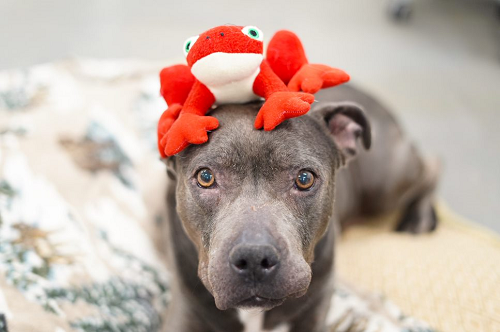
Tori Fugate, KCPP’s chief communications officer recalls the case of Vivian, who came into the organization in really bad shape. KCPP shared a TikTok of her story and included a video of the clinic staff thoroughly but delicately checking her out. Three days later, KCPP followed up with another video about Vivian’s background and provided a happy update on her condition.
“The way her story was told highlighted the amazing work of our team, brought in many donations, and increased public support,” Tori says.
Brother Wolf Animal Rescue (BWAR) in Asheville, North Carolina, purposefully aims for balance in its messaging, too. In December of last year, BWAR featured the story of a momma dog and her pups who were abandoned at a campground and left to fend for themselves: “Sad eyes. Sadder story. . . Almost a week out in the elements before we heard of their story.” Visit BWAR’s Instagram in January, however, and you’ll find a silly Snow Day video featuring dogs having a grand old time on a winter’s day.
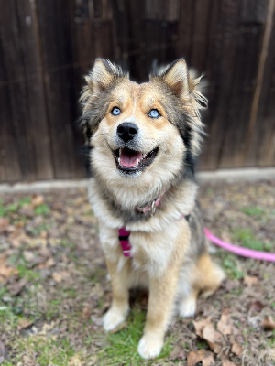 “We find when we communicate only positive parts of a story, we receive less engagement,” says Leah Craig Fieser, BWAR’s executive director. “So, we include generalized information about an animal’s ‘sad past’ and focus more on the details of the happiness, healing, joy, and love that now exist due to Brother Wolf's involvement.”
“We find when we communicate only positive parts of a story, we receive less engagement,” says Leah Craig Fieser, BWAR’s executive director. “So, we include generalized information about an animal’s ‘sad past’ and focus more on the details of the happiness, healing, joy, and love that now exist due to Brother Wolf's involvement.”
Where BWAR shifts from that approach is in email and mail communications, as donors respond more to pieces that focus heavily on the happy part of an animal's story.
“We get quite a bit of feedback to the yearly mailed newsletter in particular,” Leah Craig says. “Two of the favorite comments we received are ‘It filled my heart with joy knowing that my little donation has made all the difference in the world for animals,’ and ‘Seeing shelter animals being loved so deeply restored my faith in humanity.’
Consider the big picture
Whatever approach your organization chooses to take, your choices set the tone of your relationship with the public. And when there is nothing but depressing news saturating every media format, people may come to seek out your uplifting content.
“While negative posts are sometimes needed to bring awareness and support for certain circumstances, there is so much hate, grief, and ugliness already circulating in our lives daily,” Lauren says. “It's hard to turn on the daily news and not hear of an awful incident. Seeing non-stop 'horrific' stories will push people away and tune you out. People love to hear about the good work you are doing for people and their animals. It ultimately will make a huge difference in the day to day of your supporters.”
“Using only horrific stories means that your organization is likely only feeding into its current social media audience,” Leah Craig says. “You may be alienating other animal welfare supporters who would like to engage with you but who don't respond to only horrific stories.”
And with each animal welfare organization that chooses the positive, the more the image of the industry will change.
“It’s on us as the leaders of the animal welfare industry to change the rhetoric around people ‘abandoning’ animals when we don’t know what drove them to leave that box of kittens on your doorstep,” Tori says. “We can and should build more positivity and be more welcoming and inviting to everyone in our community.”
“Sad, horrible, or depressing posts do get a lot of comments, shares, and likes, but it kind of stops there and further perpetuates that erroneous idea that ‘people suck and can’t be trusted,’ Kristen adds. “We want to trust people and honestly, we need to trust people if we’re going to save lives.”

Liz Finch
Senior Writer
Best Friends Network
If you enjoyed this program spotlight, you can find our complete catalog of spotlights here.